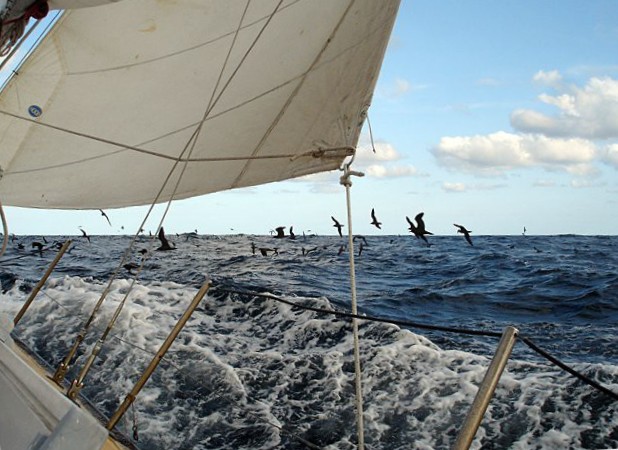|

|
Greetings from Joe
Wishing everyone a peaceful and happy 2006.
|
I try to find a photograph with some unusual feature for my new year's card. This one is from a hot, still, Spring day at Coogee, when I really regretted not having a telephoto lens. Marine mirages are not especially rare, but they are at Coogee, simply because the on-shore wind usually mixes the surface air and waves mix the surface water.

The weight of the atmosphere gives it, overall, a density that decreases with altitude. In such conditions, rays of light passing through the atmosphere are bent slightly convex up. (The lesser bending of red light allows the green flash.) In still conditions, however, an unstable layer of hot and therefore lower density air may form close to land or even sea. In this case, light rays can be bent concave up. Those rays that are nearly horizontal when they pass through the layer with anomalously low density are most affected, with the consequence that a layer of sky can be seen below the horizon. Scale has been completely disregarded in the sketch. The image of sky and sea near the horizon is also disturbed by passage through this layer, hence the blurred horizon and patchy sky above it.

